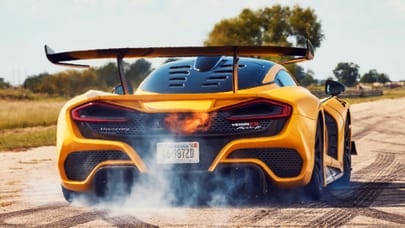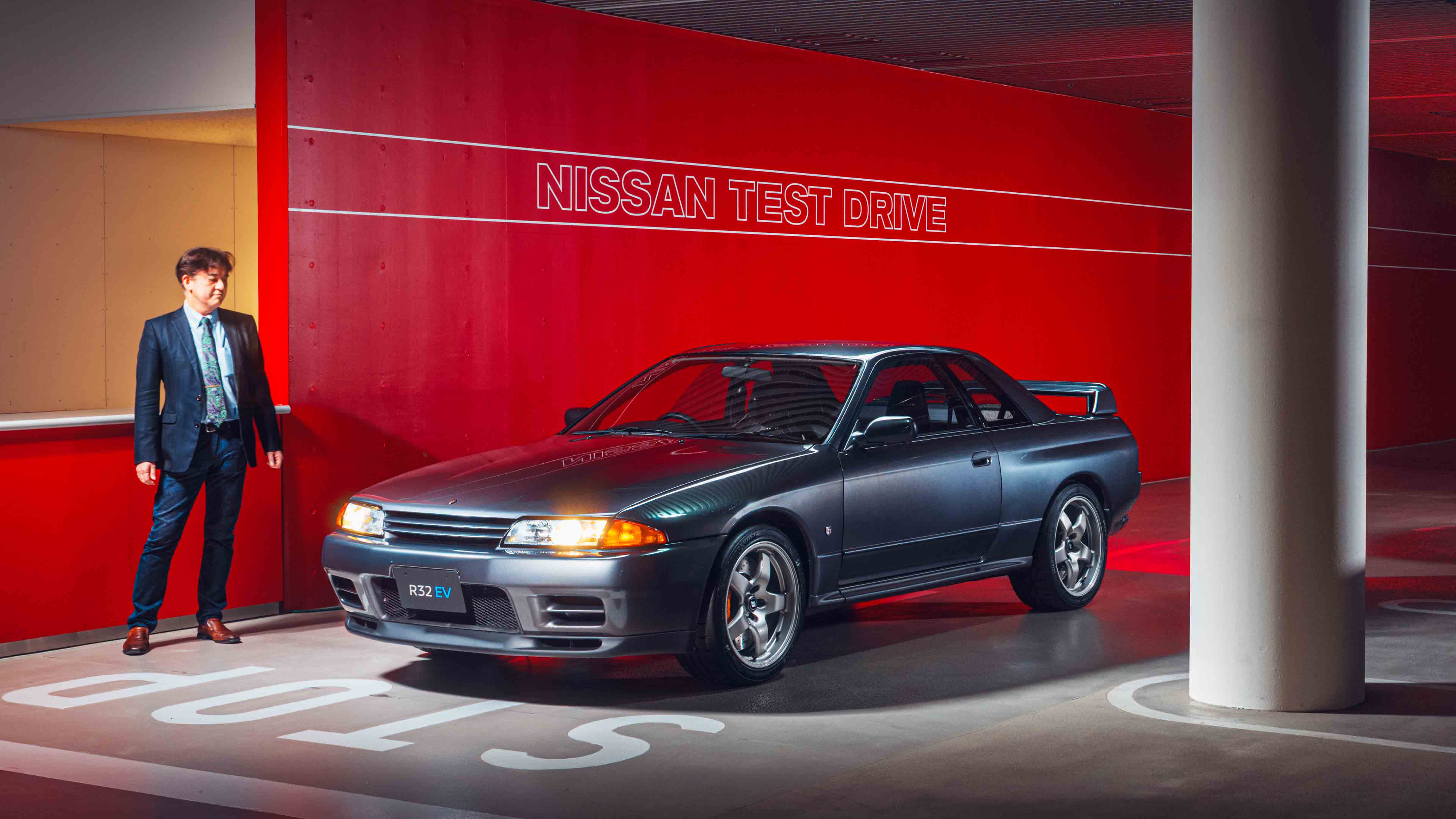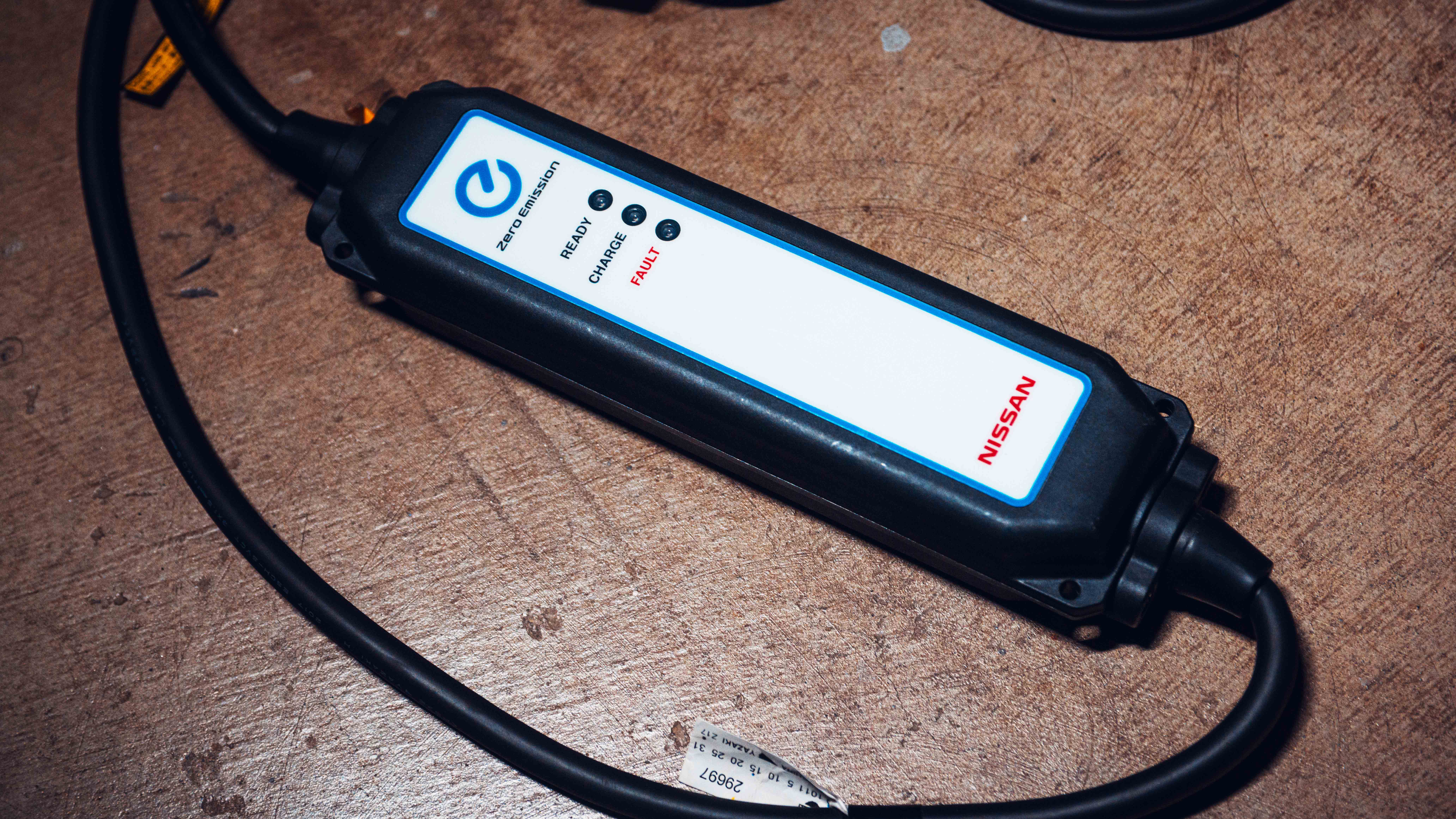
Volt-zilla: is this electrified Nissan R32 Skyline GT-R brilliant or sacrilege?
EV restomods are controversial at the best of times... but electrifying an R32 Skyline? This could go either way
There’s something lurking in the basement of Nissan’s global HQ, and it’s likely to ruffle a few feathers. Like Bowie, this legend is evolving into something otherworldly, transcending time, space and preconceptions about lightning bolts painted proudly across your face. Deep underground, Godzilla has had a heart transplant and is waiting for the doctor’s all clear before being let loose on the streets of Tokyo.
This is the passion project of Mr Ryozo Hiraku, an engineer at Nissan and GT-R owner. He and his small team have designed and built this electric Skyline entirely in their spare time and with a very limited budget. Luckily, Nissan just so happened to have a mint condition R32 lying around, finished in the ineffably cool gunmetal grey.
The rest of the conversion is all parts bin donations too – there’s a 92kWh battery from the Leaf Nismo RC and two of Nissan’s e-Powertrain electric motors. Lifting the bonnet to find a squiggle of wires, inverters and a distinct lack of anything turbo shaped immediately conjures comparisons to Doc’s DeLorean.
Words & Photography: Toby Thyer
In period, the R32 had a claimed output of 276bhp under the gentlemen’s agreement, although we now know that was probably underselling the car’s true power output, and indeed potential. How does this R32 EV stack up? The combined front and rear drive motors make 429bhp, and 251lb ft of torque each, which is enough to give the car a similar power to weight ratio considering the disadvantage of having a small polar bear’s worth of batteries on the back seats – 367kg to be precise.
We’re yet to drive it, but you know the drill – not only is the power and torque immense, but the electric motors slap it on immediately. Even the most efficient e-assisted turbo can’t compete with that. It’s important to note the goal here wasn’t to create a 1,000bhp electric straight line monster, but to equal the baseline performance of the original car... accounting for the extra weight.
In an ideal world, we’d all be swimming in eco friendly carbon neutral synthetic fuels in order to keep the ICE party going until our sun fizzles out. Realistically though, the future is more uncertain than that, and electric has a central role to play in a renewable future – for mass produced cars at least.
What Hiraku-san is trying to do is safeguard against the loss of engaging driving machines, here essentially distilling the handling and spirit of the original GT-R and storing it in a battery cell for future generations to enjoy. He’s not trying to create a new R32, more to recreate it in digital form. He calls it a “digital remaster”.
It’s a positive step in connecting the GT-R’s glorious past to its electrifying future
Basically you lose the dirty, noisy, polluting dinosaur juice drinking lump that is the RB26 engine and replace it with nice clean electricity while – and this is crucial – retaining the excitement and experience of the original car. Many, including myself, would argue that you can’t have one without the other, the analogue sensory overload is what makes pushing these cars hard so appealing. The team has tried to address this, kind of, with a speaker mounted behind the driver’s seat pumping synthesised rev matched engine noise into the cabin. There’s even talk of adding vibrations into the touchpoints too.
Top Gear
Newsletter
Thank you for subscribing to our newsletter. Look out for your regular round-up of news, reviews and offers in your inbox.
Get all the latest news, reviews and exclusives, direct to your inbox.
Then there’s that hefty stack of cells in the back seat, how do you make them less noticeable while chucking the car around a local B-road? The chassis is all standard R32 fare, but the stock double wishbone setup has been tuned to cope with the extra weight, with upgraded Öhlins shocks from the Nismo parts bin. Brakes are Nismo’s off the shelf R35 six pot conversion kit, which is handy because this weighs roughly the same as an R35.
There are quite a few tasty new parts that have been produced especially for this project too, which has got GT-R fans salivating. The carbon fibre full bucket seats made by Recaro, the digital readouts on the dash and centre console, and best of all the 18in wheels, direct copies upscaled from the OG 16in R32 items. Hiroku-san has even got some period correct RE-71RS Potenzas recreated in 18in form. Well played.
While the car is basically finished in physical form, it had its shakedown last year on Nissan’s test track and the team is a long way off having it drive and handle like the original. The Recaros, dials and reupholstered interior are classy additions though, making this the best looking test mule ever made. A Bowie-esque lightning bolt livery might be a bit much, but I’d be lying if I said I didn’t want to see it.
Will Hiraku-san and his team succeed in bottling the essence of Godzilla? Will this study result in a small, fun to drive EV sports car that handles like a 1990’s GT-R? Will the next gen R36 GT-R go electric and have some of this DNA programmed into its bones? Your guess is as good as mine, but whatever happens, it’s a positive step in connecting the GT-R’s glorious past to its electrifying future.
Trending this week
- Car Review
Renault Clio










